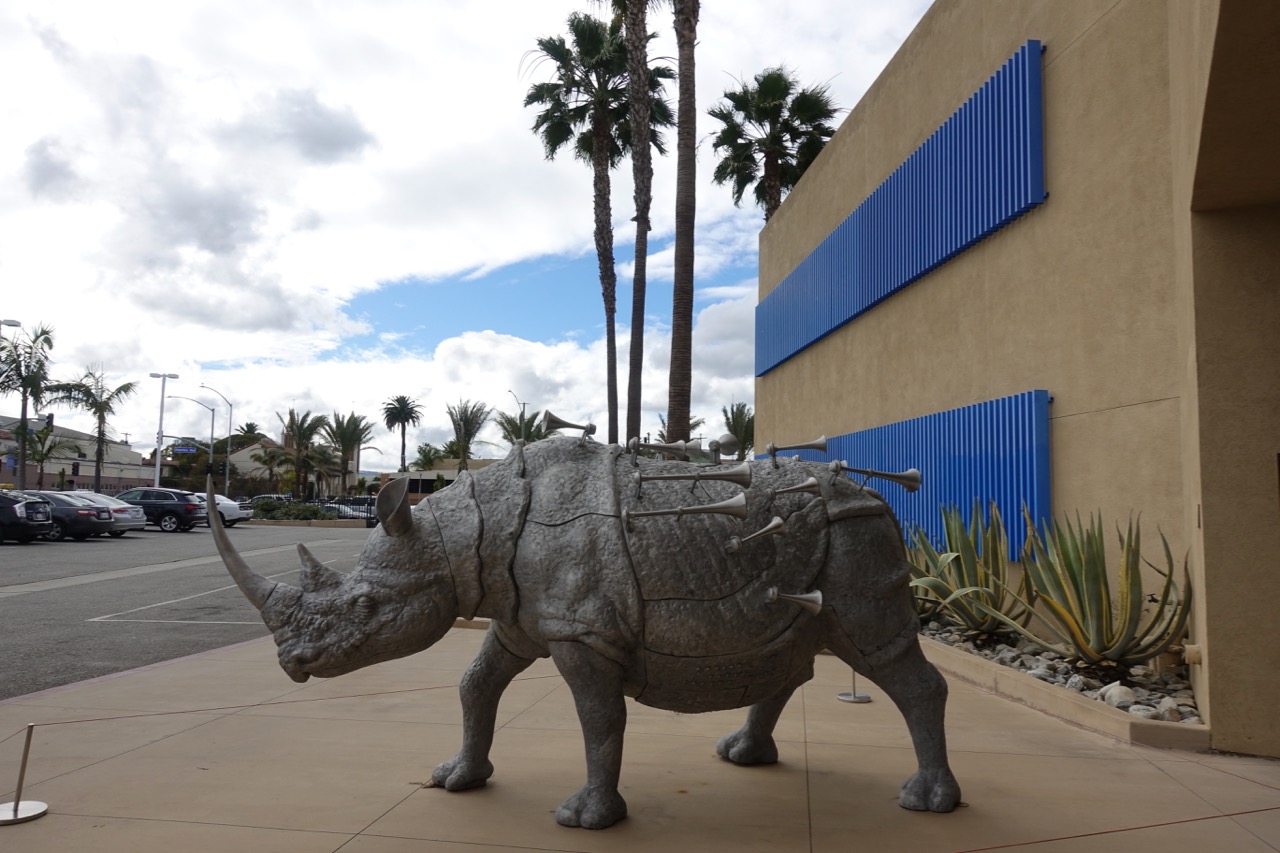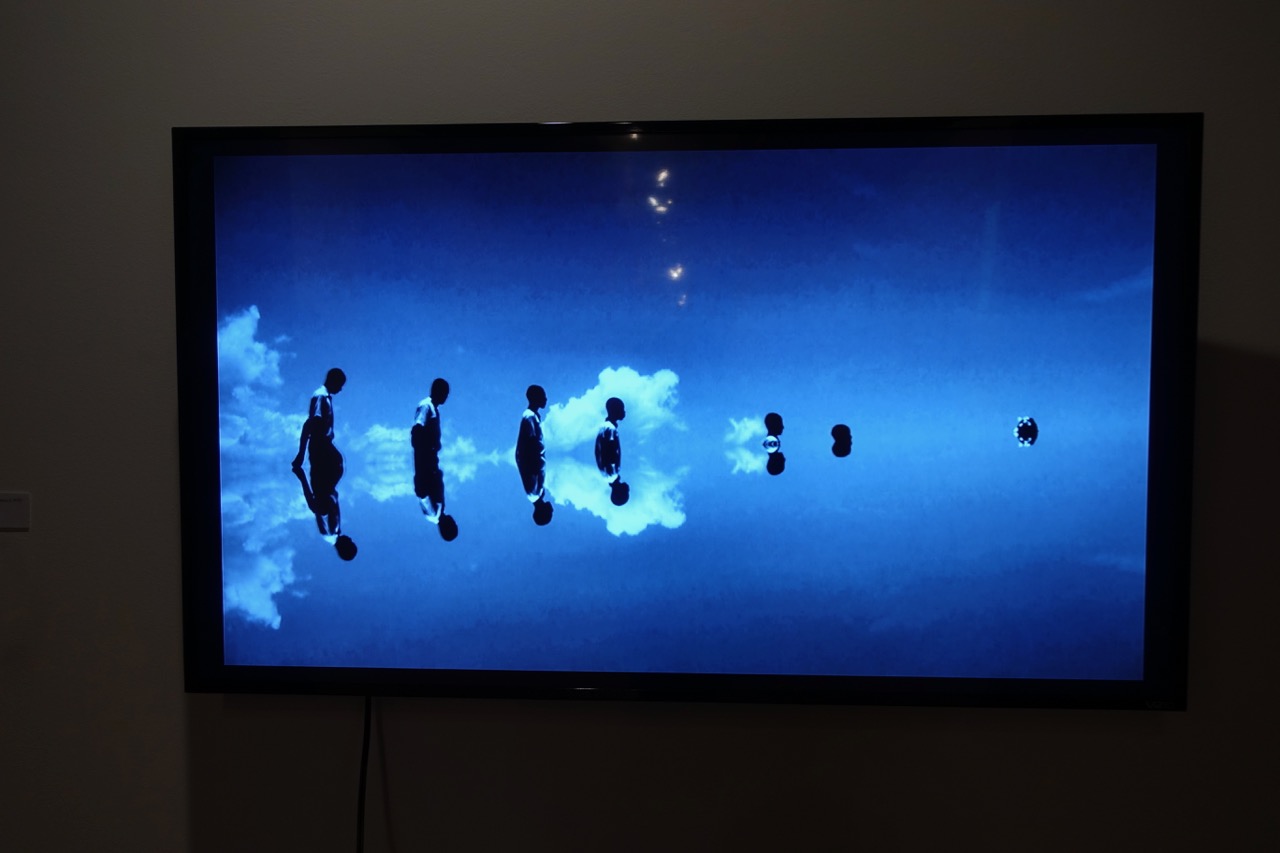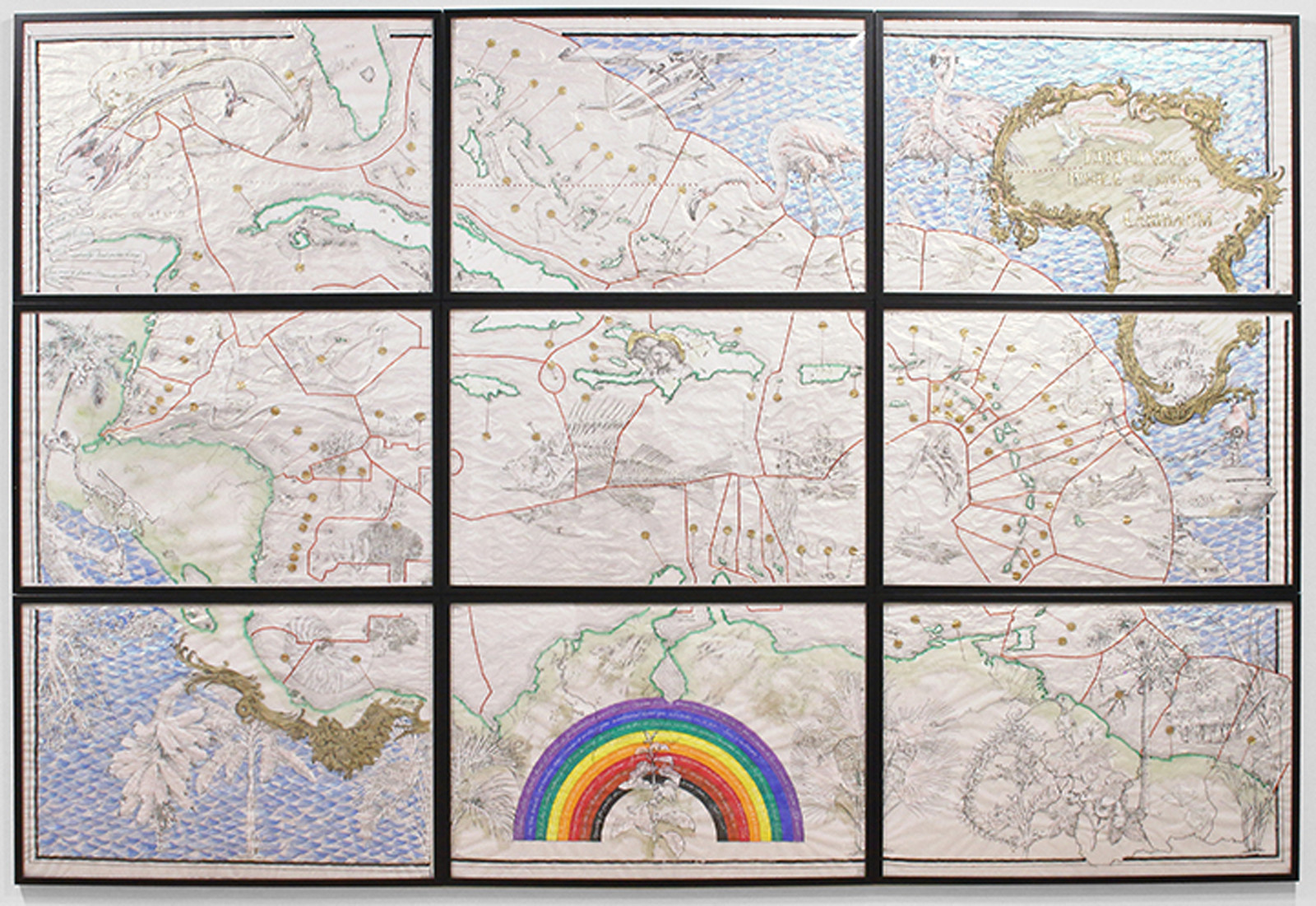Lured by the news of an excellent PST LA/LA show, I ventured to the Museum of Latin American Art in Long Beach for the first time. I was delighted to be greeted by a very welcoming rhino and loved the copious accessible parking. It’s always nice to be in good mood walking into a new place (especially after time on the 405).

Relational Undercurrents: Contemporary Art of the Caribbean Archipelago, curated by Tatiana Flores, is MOLAA’s Pacific Standard Time: LA/LA exhibition. It is a major survey exhibition of twenty-first century art of the Caribbean that employs the archipelago as an analytical framework. From its starting point of focus on Caribbean island nations and their shared waterscape, the exhibition narrows its lens further to four themes. The exhibition includes painting, installation art, sculpture, photography, video, and performance.
The show is only open through March 4. It is a powerful collection, curated in a manner that offers a new perspective on a part of the world that is not always examined as a whole. I rue not coming to visit it sooner, and am sad that I didn’t share news earlier about the exhibit’s value to families – it explores Caribbean art and history, and provides plenty of intriguing topics for discussion post Hurricane Maria.
How to do the Trip:
The Museum of Latin American Art is intimate and friendly and is dedicated to contemporary Latin American art and culture. The permanent collection is only sometimes on display, so check the museum’s site before a trip to Long Beach because you just might learn something new. Long Beach is not too terribly far for an afternoon excursion — most have ventured south to the Aquarium or for a conference. Although kids won’t want to do more than one museum in a day, adults can catch more than one museum at time because each is small. The Long Beach Museum of Art is nearby and has a nice restaurant. Even if you just visit one, be sure to make your lunch date at Claire’s.
Favorite Piece:

Truthfully, it was this soulful and mysterious image that got me to drive south – I wanted to see the video in person and understand how it worked. Created by Jeannette Ehlers in 2010, “Black Bullets” is haunting – it evokes an eerie sense of history and is mesmerizingly beautiful to watch. You can show it to kids here on the site, and ask them what they think it means, and how they think it was created. It’s actually black and white in person – but my camera picked it up as blue.
Here is a video of the piece displayed outside in SNOW in Syracuse NY – the artist, who is Danish and Trinidadian, explains what the work means. Worth fifty seconds!
Overall Topic:
The show presents contemporary art work from all over the Caribbean – from Cuba to Haiti to the tiny islands around Barbados. The easiest room for kids is the first, where large scale maps take up the room. Each is more beautiful than the next and kids will appreciate the hours taken to create them. They’re not traditional maps, but personal statements, that speak to a sense of place and identity. Kids can think about the type of map they’d create to describe their life.

The most elaborate map is Jean-Ulrick Désert’s map “The Waters of Kiskeya/Quisqueya” which is appears to be traditional (land masses and oceans) but has elaborately beautiful elements of fantastic and tangible events, ultimately evoking the complex layering of history in this region.

Lots to Discuss:
I particularly loved the Activity Guide created by the museum for families. Good museums take the time to help parents engage kids in their work, and this one has 8 pages of art projects. The clever prompts help kids connect to the exhibit and create something in response to the many ideas on display – from mapping your world, to a shifting ecology, to the ever present horizon of island life, to living in an archipelago.

And telescoping out, there are bigger concepts to discus at this show. Because it includes art from all over the Caribbean, the vast and varied history of colonialism is open for exploration – peoples from Africa and the Americas, from Europe and Asia settled in the islands where languages from all over the world are spoken. Alexander Hamilton was famously from the Caribbean, so perhaps the culture is getting its due. More likely, kids will have heard of these islands because of the recent hurricanes that decimated Puerto Rico and other nations. Take your pick- this show is rich with ideas and the imagery themselves are indelible. Enjoy!

